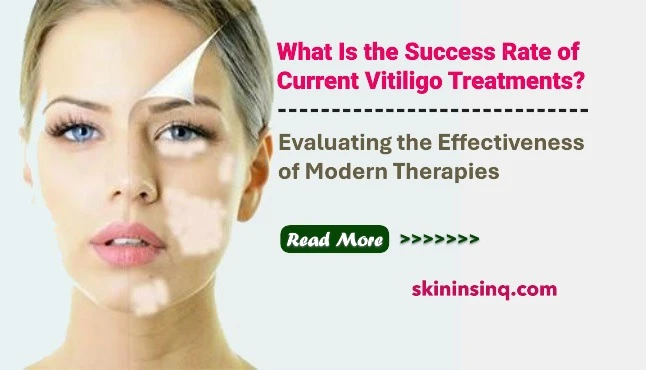What Is the Success Rate of Current Vitiligo Treatments? Evaluating the Effectiveness of Modern Therapies
What Is the Success Rate of Current Vitiligo Treatments? Evaluating the Effectiveness of Modern Therapies
Vitiligo, a chronic skin condition characterized by loss of pigment, affects individuals differently, and so does the effectiveness of treatment. While there is no guaranteed cure, many modern treatments can help restore skin color and improve appearance. The success of these treatments varies based on the type of vitiligo, how early treatment begins, the method used, and individual response.
1. Topical Corticosteroids
-
Success Rate: About 45–60% repigmentation in early or localized cases.
-
Best For: Localized vitiligo, especially when started early.
-
Limitations: Long-term use can thin the skin and reduce effectiveness.
2. Topical Calcineurin Inhibitors (e.g., Tacrolimus)
-
Success Rate: 40–65%, especially on the face and neck.
-
Best For: Sensitive areas like eyelids or folds; safer for long-term use than steroids.
-
Limitations: Less effective on hands and feet.
3. Phototherapy (Narrowband UVB or Excimer Laser)
-
Success Rate: Up to 70% with consistent use over several months.
-
Best For: Widespread vitiligo or when creams alone don’t work.
-
Limitations: Requires multiple weekly sessions over several months.
4. Surgical Treatments (e.g., Skin Grafting, Melanocyte Transplants)
-
Success Rate: Around 60–90% in stable vitiligo.
-
Best For: Stable, non-spreading vitiligo patches unresponsive to medical therapy.
-
Limitations: Invasive, not suitable for actively spreading vitiligo.
5. Depigmentation Therapy
-
Success Rate: High success rate in achieving uniform skin tone (over 80%).
-
Best For: Extensive vitiligo where repigmentation isn’t possible.
-
Limitations: Permanent and often emotionally difficult.
6. Newer Biologic or Targeted Therapies (e.g., JAK inhibitors like Ruxolitinib)
-
Success Rate: Early studies show 50–75% repigmentation in some cases.
-
Best For: Ongoing research; promising results for non-segmental vitiligo.
-
Limitations: Still under investigation; expensive and not widely available yet.
Conclusion
While no treatment offers a universal cure, many individuals experience significant repigmentation with consistent and personalized treatment. The highest success rates are typically seen with early intervention, combination therapies, and close monitoring by a dermatologist. New advances, including biologics and regenerative techniques, are showing promise for improving outcomes even further in the near future.

Related Blog
What Causes Oily Skin and Can It Be Managed Naturally? Exploring Root Causes and Gentle Solutions
Aug 2, 2025 by Admin
General
What Are the Signs That You Have Sensitive Skin? Key Symptoms to Help You Identify This Delicate Skin Type
Aug 1, 2025 by Admin
General